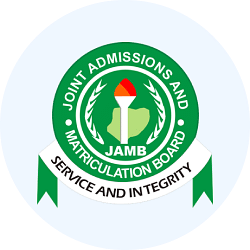Synopsis: Pollution | Biology for JAMB PDF Download
| Table of contents |

|
| Introduction |

|
| Air Pollution |

|
| Water Pollution |

|
| Soil Pollution |

|
| Conclusion |

|
Introduction
Pollution refers to the introduction of harmful substances or contaminants into the environment, resulting in adverse effects on the natural resources, living organisms, and ecosystems. It poses a significant threat to human health and the environment. Pollution can occur in various forms, including air, water, and soil pollution. Understanding the sources, types, effects, and methods of control for each type of pollution is crucial for addressing this global issue effectively.
Air Pollution
Air pollution occurs when harmful substances, such as gases, particulate matter, and chemicals, are released into the atmosphere. The major sources of air pollution include industrial emissions, vehicle exhaust, burning of fossil fuels, agricultural activities, and forest fires.
Types of Air Pollution
- Particulate Matter: Tiny particles suspended in the air, including dust, soot, and smoke, can enter the respiratory system and cause respiratory problems.
- Gaseous Pollutants: Harmful gases like sulfur dioxide (SO2), nitrogen oxides (NOx), carbon monoxide (CO), and ozone (O3) contribute to smog formation, respiratory diseases, and damage to vegetation.
Effects of Air Pollution
- Respiratory Problems: Air pollution can lead to various respiratory disorders like asthma, bronchitis, and lung cancer.
- Environmental Degradation: It contributes to the deterioration of ecosystems, reduces crop yields, and damages buildings and monuments.
- Climate Change: Air pollutants like carbon dioxide (CO2) and methane (CH4) contribute to global warming and climate change.
Methods of Air Pollution Control
- Use of Cleaner Technologies: Industries and vehicles should adopt cleaner technologies and fuel sources to reduce emissions.
- Regulation and Legislation: Governments should enforce strict emission standards and regulations.
- Afforestation: Planting trees helps absorb carbon dioxide and improve air quality.
- Promotion of Renewable Energy Sources: Encouraging the use of solar, wind, and hydropower reduces the dependence on fossil fuels.
Water Pollution
Water pollution occurs when harmful substances or contaminants are discharged into water bodies, such as rivers, lakes, and oceans. The major sources of water pollution include industrial waste, sewage, agricultural runoff, oil spills, and improper disposal of chemicals.
Types of Water Pollution
- Organic Pollution: Discharge of organic waste, including sewage and agricultural runoff, leads to oxygen depletion and eutrophication, harming aquatic life.
- Chemical Pollution: Release of toxic substances like heavy metals, pesticides, and industrial chemicals into water bodies can contaminate drinking water and harm aquatic ecosystems.
Effects of Water Pollution
- Contaminated Drinking Water: Water pollution can lead to the spread of waterborne diseases, such as cholera and typhoid.
- Biodiversity Loss: It can result in the decline of fish populations and other aquatic organisms, disrupting the food chain and ecosystem balance.
- Destruction of Ecosystems: Water pollution harms coral reefs, wetlands, and other fragile habitats.
Methods of Water Pollution Control
- Sewage Treatment: Proper treatment of sewage is essential before its discharge into water bodies.
- Industrial Regulations: Industries must follow stringent regulations for waste treatment and disposal.
- Agricultural Best Practices: Implementing proper irrigation techniques and reducing the use of fertilizers and pesticides can minimize runoff.
- Public Awareness and Education: Promoting responsible waste disposal practices and raising awareness about water pollution prevention.
Soil Pollution
Soil pollution occurs when soil is contaminated with harmful substances, affecting its fertility and disrupting the ecosystem. The major sources of soil pollution include industrial activities, improper waste disposal, use of pesticides and fertilizers, and mining operations.
Types of Soil Pollution
- Chemical Pollution: Contamination of soil with heavy metals, pesticides, and industrial chemicals can render the soil infertile and harm plants and organisms.
- Agricultural Pollution: Excessive use of fertilizers and pesticides can lead to soil degradation and nutrient imbalances.
Effects of Soil Pollution
- Reduced Crop Yields: Soil pollution affects agricultural productivity and reduces crop yields.
- Groundwater Contamination: Contaminants can seep into groundwater, polluting drinking water sources.
- Erosion and Land Degradation: Soil pollution contributes to soil erosion, desertification, and loss of biodiversity.
Methods of Soil Pollution Control
- Proper Waste Disposal: Ensuring proper disposal of hazardous waste and chemicals prevents soil contamination.
- Organic Farming: Promoting organic farming practices reduces the use of chemical fertilizers and pesticides.
- Soil Conservation Measures: Implementing measures such as contour plowing, terracing, and afforestation helps prevent soil erosion.
- Remediation Techniques: Soil remediation methods, such as bioremediation and phytoremediation, can be employed to clean up polluted soils.
Conclusion
Pollution is a global challenge that requires immediate attention and effective measures to protect human health and the environment. Categorizing pollution into air, water, and soil pollution helps in understanding the different sources, types, effects, and methods of control for each. By implementing strict regulations, adopting cleaner technologies, promoting sustainable practices, and raising public awareness, we can work towards reducing pollution levels and preserving our planet for future generations.
|
224 videos|175 docs|151 tests
|

|
Explore Courses for JAMB exam
|

|
















